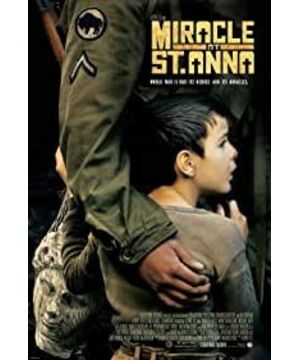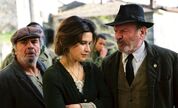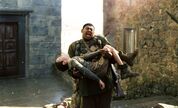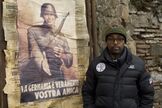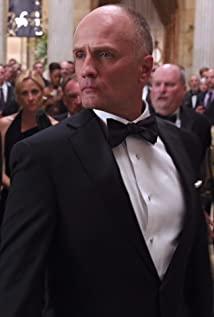Let me talk about the historical background of this film that I found:
The protagonists of this film are four African American soldiers from the 92nd Division of the US Army fighting in Italy.
Since the beginning of the American Revolution, African American soldiers have participated in almost every important war in American history. Usually they are served in intensive service, such as the Massachusetts Volunteer Infantry in the American Civil War, the 9th and 10th African American Cavalry Regiment in the Indian War and the Spanish-American War, and the 369th Infantry Regiment with outstanding records during the First World War. However, for every war that the United States was involved in, the whites tried to obliterate the merits of the black soldiers. Every time, black soldiers were divided into separate combat units according to the apartheid policy. During World War II, there were 909,000 black soldiers serving in the U.S. Army, and only one division fought in Europe—the 92nd Infantry Division (Note: The 92nd Division was one of the only two division-level combat troops composed of all black Americans during World War II) . The vast majority of African soldiers will be assigned to work in engineering, transportation, or other unpleasant tasks, such as guarding the grave. The government's view is that blacks lack the courageous and enterprising spirit of fighting.
The 92nd Division is a division composed of all black soldiers. His enlisted soldiers and most of the mid-level officers are black, and the senior officers are white. During the First World War, the 92nd Division fought in France. It was regrouped again in 1942. In October of the same year, it was formally put into pre-war training. The first division commander was Major General Edward M. Almond. (It also appeared in the movie, as if he also thought that his teacher was an experiment, a black man of Mrs. Roosevelt, which shows how serious racial discrimination was in the military at that time). In the summer of 1944, the 92nd Division entered the Italian campaign. The division uses water buffalo as the traditional division logo, which is a round olive green shading with a black buffalo. Interestingly, the division has always raised a live buffalo as a mascot.
The 92nd Division is called the Buffalo Division or "Buffalo Soldiers" (the movie title is actually "BUFFALO SOLDIERS'44") because of two legends or stories at the time: one is because of the blacks who served in the western United States in 1860 The soldier was named because the Indians called the black soldiers they saw for the first time as "black-skinned American whites." They felt that these soldiers had black skin and curly hair, just like a buffalo, so they called this excellent and worthwhile. The honored troops are "Buffalo Soldiers". This nickname may also come from another story-in the cold winter of the American West, many black soldiers rely on buffalo as a cover due to the government's lack of replenishment of uniforms.
In the spring of 1944, under pressure from the black community, the government reluctantly lifted the restrictions on black soldiers fighting. On July 30, 1944, the first group of soldiers, the 370th regiment, landed in Naples. They were warmly welcomed by some black soldiers serving in other units. The remaining troops also arrived in Italy in the following months.
Two days after the restoration of Rome, the Allied forces landed in Normandy. At the same time, in July, the Allied forces had gained a foothold on the Arno River in Italy and were preparing to attack the very strong defense line of the German Nazi Marshal Albert Kesselin, the infamous Gothic defense line. ——The Americans have many tanks but lack infantry. Kesselin built a defense line from one coast to another in the northern Apennines, a depth of up to 50 miles, and formed a natural barrier to the industrial and agricultural centers in the north.
In addition to the 370th Regiment, the 92nd Division has two other infantry regiments, 365 and 371 regiments; four artillery battalions, 597, 598, 599, and 600 companies; division, reconnaissance units, and the 317th Engineering Medical Battalion, and communications company , Quartermaster Company, Orders and Military Police. The "Buffalo Soldiers" were assigned to the 9th Army of the US Fifth Army and were responsible for attacking two key areas-the Serchio Valley (located in Tuscany) and the Ligurian Sea coastal. The 92nd Division is not only facing stretches of mountains, Germany’s powerful defensive forces, including the German 14th Army, the 90th Panzergrenadier Division, the 16th SS Panzergrenadier Division, and the Italian Fascist Force, as well as many man-made settings. Obstacles.
Through hard and fruitful defensive battles, Kesselring has won ample time to build the Gothic line. The Germans used 15,000 Italian and 2,000 Slovak laborers to build bunkers, tank defenses, tunnels, and anti-tank trenches; strengthened the existing Italian defense fortifications; detailedly laid out minefields and densely woven areas that were insurmountable by enemy infantry. Firepower Net.
In this stage of the Italian campaign, the Allied forces had an advantage. Italy is in the civil war. The Italian guerrillas are growing rapidly and causing a lot of trouble for the Germans. Once, the guerrillas even shot and killed a commander of the Luftwaffe. Interestingly, because of this, the German armored troops General Fridolin von Sengel even discarded his general badge and drove an unmarked Volkswagen sedan.
When the soldiers of the Buffalo Division spread along the front line, they began to advance in coordination with the tanks of the American First Armored Division. In addition, there is the 6th South African Armored Division, the Brazilian Expeditionary Force and the 45th Joint Task Force. The British and American anti-aircraft artillery units are also assigned to support the infantry.
In August 1944, the 5th and 8th Army planned to launch a general attack on the Gothic Line. The 8th Army attacked the Adriatic coast and the 5th Army attacked central Italy and advanced towards Bologna. The Ninth Army will cross the Arno River as planned and arrive at Alpono and the Pisa Mountains. At the same time, the 2nd Army of the 5th Army attacked the center of the Gothic Line along the right flank of the British 13th Army. The relatively weak 9th Army will assume the security task on the western front to prevent the German counterattacks and protect the most important beachhead supply points of the Allied forces.
On September 1, the three battalions of the 370th Regiment, in coordination with the First Armored Division, crossed the Arno River and advanced 2-3 miles north. In the early hours of September 2nd, engineers from the 370th Regiment and the First Armored Division had cleared the minefields and erected floating bridges. Although the 45th Task Force was blocked by the minefield, the 370th Regiment worked hard to advance. The third battalion of the 370th Regiment reached the western part of Mount Pisa, and the first battalion reached the eastern part of the mountain. Using tools such as mules and horses, the 2nd Battalion went straight through the mountains.
The Germans counterattacked with machine guns, light weapons, and artillery, while moving to the back of the Gothic line. The soldiers of the Buffalo Division rushed to the north of Pisa Mountain and attacked Luca. They successfully eliminated the enemy's resistance on the road through Lucca in Pisa. In the following days, they patrolled the area and waited for the remaining troops of the 5th Army.
The main offensive started on September 10. Three days later, the Buffalo Division soldiers and the tanks of the 1st Panzer Division had arrived in the northern Apennines. On September 18, the 2nd Army also broke through the Gothic Line and passed El Diogo, and most of the tanks of the First Armored Division also moved into the area. It was not until the end of the month that the Buffalo Division entered the Sergio Valley that the 9th Army consolidated its advantage in this area.
What the movie should tell is the story of this period. Santa Ana is a place name, its full name is Santa Ana di Stazema, located in the Lucca region of Tuscany. The film begins with a flashback:
In 1983, in Harlem, New York, the black veteran hero Hector watched the movie "The Longest Day" at home. The first line is what an American soldier said in "The Longest Day". He was hung on the top of the church for 10 hours during the parachuting in Normandy. When he was rescued, only the church bells were echoing in his ears. Then Richard Bolton looked at the corpse of the U.S. paratrooper hung on the lamp post with a sad expression. A poster from World War II was hung on the wall of the house. On it was a black soldier. It read: "We are going to our posts, and we will win because the Lord is with us."
Hector listened to Richard Bolton's words in the film "God bless, we will do our duty", and said to himself: "Guys, we have also fought for the country", leading to what this film is about History: Negroes also fought bloody battles for the United States in World War II.
Then the scene arrived at the post office where Hector worked, and the miracle was about to appear.
Hector has a very nice attitude at work, and he can't see that he will make the next move. When a black man wanted to send a package, Hector pointed to the sign: only stamps. It is this window that only sells stamps that has attracted the enemy from decades ago: Rudolph. The two watched for a moment, and Hector quickly recognized the man who bought the 20-cent stamp. "Rudolf" Hector said the name he had never forgotten for decades, and at the same time took out a German Ruger pistol from World War II from the drawer, and shot Rudolf to death. Then he calmly closed the window and left.
Reporter Tim began to interview the case. The unfortunate reporter is Robin of Batman, and the sheriff is the CIA of Transformers. The two acquaintances had a conversation. The reporter followed the police to Hector's house and found that the house was full of things related to God. Hector is a battle hero, a Purple Heart Medal winner, with a clean background, and will retire in three months. A stone head was found in the house. Found the professor appraisal, stunned, more than 450 years. It is the Italian Renaissance, the "Ponte Santa Trinita" (Ponte Santa Trinita, transliterated "San Trinita Bridge", named after the neighboring "Holy Trinity Church") on the "Three Holy Bridges" on the Arno River in Florence, the goddess of peach blossoms Avatar. There are 4 statues on the bridge, the goddess of peach blossom is also called the god of spring. There are 6 bridges preserved on the Arno River in Florence, and the "Three Holy Bridges" built in 1257 is the most famous of them. In 1944, this famous stone-carved bridge was blown up by Hitler. After the war, the Bellini family donated a huge sum of money and rebuilt a new "Three Holy Bridge" on the original site of the disappeared "Three Holy Bridge" according to the original design. News of the $5 million head portrait in a criminal’s home is spread to the world through newspapers. The reporter went to interview Hector, who had been caught, and Hector, who had not eaten for two days and had been silent for a long time, only said excitedly: "I know who the sleeping man is." At the same time in Rome, one was on the street. The man drinking coffee accidentally saw the news in the newspaper that fell from the sky, and the miracle was about to happen again.
The scene turned to the autumn of 1944. The G and F companies of the 370th regiment of the 92nd Division tried to cross the Saiqiu River. The protagonists appeared: Sergeant Stamps of Company G, Hector of the radio station on his back, Bishop who was greedy for money and lustful, and the head of the goddess Peach Blossom hung on the waist of the big Chai, which he picked up in the ditch of Florence. Take it around as an amulet and touch it from time to time to bring good luck. While advancing, a black soldier kept calling his mother timidly that I want to go home, and Chien hesitated to move forward, even unable to understand the tactical commands. Therefore, the combat effectiveness of black soldiers is still doubtful. A German propaganda vehicle appeared on the other side of the river and began broadcasting Radio Berlin's propaganda for the 92nd Division. The content of the propaganda is very long, mainly aimed at the contradiction between whites and blacks. In fact, I still expressed the doubts at the time: "Why do black people dedicate their lives to a country that abandons you, a country that takes you as slaves? The sacrifice of black people is only to win the right to return home as a second-class citizen. Is there the right to vote there? "This kind of propaganda can still confuse people, causing black officers to constantly remind soldiers not to be affected, while white officers are worried about causing ethnic riots. But the facts are indeed as advertised. The black soldiers are crossing the river, and the new white commander is hiding in the back, where even the telescope can't see the front line. No wonder the black lieutenant spit into the white officer's canteen. At that time, the officers of the 92nd Division were frequently transferred, so that for a while the soldiers did not know who their superiors were.
Next came the inevitable bloody killing. Under the tight defense of the German army, the 92nd Division was unable to cross the river, and only four protagonists passed by. The big Chai En was like a divine help, standing in the middle of the river, the bullet couldn't hurt him, showing the power of the amulet. The white officers did not believe that they had crossed the river, and instead of shelling in the direction they called, they shelled the U.S. troops who had retreated across the river. Under the double shelling of the German and American troops, the black people were massacred and 1,500 people lost a quarter (this was later reported to the commander of the 92nd division). Under the distrust of the white military officers, the blacks became pitifully guinea pigs. But even so, the black soldiers acted as brave as the white soldiers.
The four men walked along the river, found a defensive gap and went ashore. Big Chaine rescued the little boy Angelo in the house on the shore. Angelo kept talking to himself, talking to Artur. But he was injured by a shell hit on the roof. The avatar gave Zion strength, let him lift the wood that was pressing on Angelo, let him escape the bullets of the German melee (the German army fighting in the house was just a passing by, not the running German army), and let him and Angelo escaped the shell that hit the house. Chai said that he had never been close to a white man, even touched him, including dead people, but he had always held Angelo, a white child, and took care of him like his own child. The kindness of blacks was undoubtedly revealed. It also showed racial discrimination at the time. It was not that blacks were unwilling to contact whites, but that whites were more responsible. He felt that this child was sheltered by God, and that the righteous God was with this child.
A U.S. artillery shell struck a transformer strangely and did not explode. Instead, it caused electricity to come from the Tuscan town of Corona, which had been out of power for two and a half years. This is undoubtedly another miracle. Because the place where the four people settled is this small town located at the foot of Sleeper Mountain. Sleeper Mountain is like a sleeper with an upward face. Legend has it that one day he will wake up in order to protect the safety of the town. There is no German army in the town, but sometimes they will go to the town to post posters and search for some food (the German army was in short supply and the soldiers were scarce of food and ammunition), so the residents of the town hated the German army and knew who had it. The guerrillas will not report, the guerrilla "Butterfly" belongs to this small town. This explains the four American soldiers in the film swaggering around in the small town and participating in the dance without worrying about being discovered. The four men brought their children into a family in a small town. The old man of the house was a member of the Italian Fascist Party, and the husband of his daughter Lenate was also a Fascist member. He joined the army and was sent to the Eastern Front. In the face of cruel reality, the Italians also opposed Hitler and Mussolini. In order to take care of Angelo, everyone decided to stay in the town.
The 65th Infantry Division of the German Wehrmacht also received an order to catch the guerrilla "Butterfly" and a German deserter Brandt, and to carry out the Boden order issued by Kesselring: that is, for every German killed, ten Italians should be killed. people. The 65th Division of the Wehrmacht was probably defeated on the Eastern Front. Commander Eicholz was also injured and transferred back to Italy. There is a detail. In the battle of the 65th Division to defend the Saiqiu River, this deserter Brandt also appeared. He should be from the 16th SS Division, but he said he belonged to the 65th Division. Other Germans said that they thought it was 65. The teacher died in Russia. Eicholz was very reluctant to implement Boden's orders, believing that it violated the Geneva Conventions, which led him to save Hector in the end.
In the small town, the four men repaired the radio station and received an order to capture a German prisoner. For this reason, Staples and Bishop argued. Staples represents the positive force among black soldiers. They are polite, willing to interact with fair white officers, and willing to prove to whites that they can also fight. "This is also our country. We are working for the country. It is also for our children and future children and grandchildren. This is progress!" Bishop represents another kind of black, with more human weaknesses, which will disgust whites more. Here again triggered their memories. In 1943, at Camp Clayburn, Louisiana, USA, a few of them went to the coffee shop in town between training sessions and wanted to buy ice cream. There were American military police and a few German prisoners in the coffee shop. They were all white men and ate very happily. The owner is a racist and asked them to go to the back of the shop and wait, causing conflicts. I would rather serve German prisoners than serve black American soldiers. This is reality! Racial discrimination can surpass the enemy and ourselves. On which side does white Americans stand? This is the doubt of the black soldier. The owner also educates his son at the scene: "Learn a little bit!" The white child nodded. This is the reason why racial discrimination lasts forever! Although they turned back later and relieved their anger by pointing their guns at the shopkeeper, the pain in their hearts persisted.
At the ball in the town, Staples said to Hector: "I am in love with Italy. I am not black here, I am me. These Italians never despise me, and I have never felt such freedom in my life. The freedom I feel in a foreign country is deeper than that of my own country. I am ashamed of that. My future depends entirely on whether the United States is better, but what if it won’t be better? My heartfelt voice came out, and it was also the passage that moved me the most. In this contradictory state of mind, black soldiers can still sacrifice for the country and for future possibilities. I think that when the director Spike Lee questioned Eastwood, he was actually questioning American society, crying out for the sacrifice of black people and the injustice of black people. He questioned Eastwood's "Letters from Iwo Jima," and there was no black soldier in the film. The fact is that about 900 blacks participated in the Battle of Iwo Jima, and 11 received silver medals. Before reading this movie, I admit that I don't have a good impression of black people, but my current view has changed. I sincerely believe that they are just as kind, brave, faithful and conviction like everyone else. I want to thank Spike Lee!
With the appearance of the guerrilla "Butterfly" in the town, the story gradually became clear. "Butterfly" is named Piepi, and is Renate's husband. Rudolf who appeared in the opening movie was also a guerrilla. Piepi and Rudolph brought back a German prisoner, the deserter Brandt. And when Angelo saw Rudolph, he had a horrified expression, and he took five shots of the big man Chai. This was agreed by the two of them. He took five shots when encountering danger, but Chai was a little slow and didn't understand the little boy. mean. Then the little boy recognized Brandt, the deserter, and the two embraced and wept. Brandt was happy that Angelo could escape and asked him to continue running. In this way, all the pieces began to piece together, leading to a complete story.
Pipi's guerrillas attacked the German patrol, triggering revenge from the Germans. Pipi asked Rudolph to go to the small town of Santa Ana-di-Stazema to contact the supplies, but Rudolf betrayed him. The German army tried to lure Pipi to Santa Ana but failed, so on August 12, 1944, the whole village All men, women, and children were brought to the church and forced everyone to tell the whereabouts of Piepi. The real historical situation is that in the suppression of the offensive of the guerrilla forces, the SS destroyed all the villages and massacred the residents there, such as Marzaboto (1,800 deaths), Santa Ana-di-Stazema (600 people) Death), and some villages in the Apennines.
These massacres were carried out by the 16th SS Panzergrenadier Division (16.SS-Panzergrenadier-Division Reichsführer SS) of the 16th "National Leader of the SS". The film clearly shows the armband of the 16th SS Division. These massacres aroused Italian hatred towards Germany and resentment towards its fascist allies, although they did not participate in the cruel suppression. Four Italian divisions (called "combat teams", but ashamed to accept the honorable title they fully deserve) fought side by side with the Allied forces, and another eight divisions were stationed in the rear as a reserve force. A total of 250,000 Italian soldiers fought against the enemy, put on gray-green uniforms, and fought under the tricolor flag with the Savoy cross.
Angelo and his brother Artur escaped the massacre with the help of Brandt. But while escaping, they heard the conversation between the SS officer and Rudolph. Artur ran out and was killed. Angelo saw Rudolph clearly and managed to escape. So when he saw Rudolph again, he would warn Chai, but he couldn't communicate.
After knowing that they had captured the German prisoners, the US military officers brought a small team to pick up the prisoners and the four. The German army may have come to the town because of Rudolf’s informant or a planned counterattack. Rudolph took advantage of the situation and killed Brandt and stabbed Hector. Hector's pursuit was unsuccessful, so he was stubborn for decades. The opening scene appeared, and Rudolph did not expect to die in Hector's hands in order to buy a 20-cent stamp. Brandt was a kind-hearted German SS, as Eicholz said: "He has less sins than anyone in this war." The
US military officer rushed to the town and found the dead Brandt. Furious, yelling: "In order to be here, other white soldiers are constantly restraining the German army" White soldiers are fighting, isn't it the black soldiers? In fact, all of this stemmed from the fact that Almond, the commander of the 92nd Division, wanted to capture a prisoner to ask. With this order, how many soldiers will die for it. The hunk Cien wanted to take Angelo with him, but the US military officer refused. During the dispute between the two sides, the big guy who had always been weak and dull suddenly broke out and grabbed a U.S. lieutenant's neck and lifted it up, while Zion's upturned face coincided with the shape of the mountain of Sleeper Mountain in the distance, and the villagers cried out: " The sleeper is awake!" Is this a metaphor for the director? It means the awakening of black people to defend justice and the truth.
The officer's jeep was destroyed as soon as he left the town, and a large number of German troops arrived. Zin was shot to protect Angelo. At the door of the small town church, he gave his head to Bishop, told him to take Angelo away, and asked Hector to give Angelo the cross, and then he would tell him who his father was. . It may also be that Cien has regarded Angelo as his child. When Bishop went to save Cien, he was also shot. No matter what Bishop’s usual greed, lust, cynicism, but at the critical moment, he did not hesitate, this is the brotherhood of comrades-in-arms. In order to save the civilians, Staples fell in front of Lenat. His admiration for Renate was like a gentleman, reserved and polite. The civilians in the town were killed, and Hector fell on the road because of his injuries. The following plot starts to be a little bit strange. Angelo had some hallucinations. He gave the head of the goddess Peach Blossom to Hector, and Hector gave Angelo the cross he had with him. Angelo followed his hallucinations, followed Artur, and listened to him. The: "Remember me, him, our childhood", disappeared. When Hector held the head of the goddess and faced the German gun muzzle, a miracle happened again. The German officer Eicholz appeared, sent away the German soldiers, and even gave Hector his own Luger pistol to defend himself. German officers should not give the guns to strangers, which is why the Luger pistol is difficult to capture. The American soldiers in the brother company finally found a Ruger and died because the gun went off. Therefore, the director's arrangement can only be explained by miracles. Because believers believe that under the blessing of God and the protection of the goddess of peach blossoms, miracles will always happen. The German army actually withdrew, because the American army came, Hector carried the statue of the goddess on a stretcher, and he was the only one who knew what had happened. Therefore, he told reporters: "I know who the sleeping man is." The
scene returned to the New York court. During the court session, Hector was suddenly replaced by a lawyer, and the lawyer even threatened the judge to allow Hector on cash bail. , Two million dollars, someone paid for him. The reporter still doesn't know who the sleeping man is! Who is it? Everyone’s understanding is different: Chaen? Three sacrificed comrades? All black soldiers fighting for justice? Italian? All those who defend the country and the right to freedom? etc. . .
At the end, on the beautiful white beach, the rich man who read the newspaper news while drinking coffee in Rome is the little boy Angelo. Wearing the cross that Hector gave him back then, under the gaze of the goddess Peach Blossom, the two seemed to be back to the past.
Two and a half hours of film, so much content. There is no need to discuss how the director’s techniques, skills, and soundtracks are. We only watch the movie to tell us about this history. How can it be done in 160 minutes? For so many years after World War II, only a few movies have talked about the issue of black soldiers (there is only a black bomber team in memory). Without these 160 minutes, how many people would remember the black soldiers who died heroically?
Lieutenant John Fox, an artillery observer of the 366th Regiment of the 92nd Division, is an example of this heroic battle of black soldiers. When the enemy surrounded his garrison room, he directly ordered the artillery to fire at himself, making self-sacrifice. Fox's heroic actions brought precious time to save other troops, and he won the Cross of Valor Medal after his death.
On April 5, 1945, C Company, the vanguard of the 370th regiment of the 92nd Division, arrived at the predetermined location-Castel Arsino. When even the artillery observers asked the artillery for artillery support twice, the artillery could not believe that the infantry could advance so far. In fact, the Germans were also very surprised, because when the soldiers of the Buffalo Division arrived, they were still eating breakfast.
Company C requested reinforcements, but the regiment headquarters also had its own problems. The commanders of the two companies had already been killed, so there was no reinforcement. The Germans used cannons to greet the Buffalo soldiers who only had machine guns and mortars. In a short period of time, C Company has suffered nearly 60 casualties. The scouts and signal soldiers also suffered casualties and equipment losses, cutting off all contact with the outside world. Company C had no choice but to retreat. Captain Veron J. Buck, the only remaining black officer of Company C, voluntarily harassed the enemy, and has allowed the wounded to escape. Buck holding a grenade, supported by Thomas automatic rifle firepower, single-handedly destroyed three machine gun fortresses and an observation post. Buck has received the Bronze Heart Medal and Purple Heart Medal, as well as the Bronze Cross Valor Medal for his heroic actions that day.
Lieutenant Colonel Markus H. Ray, a senior black officer, the commander of the 600th Mountain Artillery Battalion (also an all-black unit), wrote on May 14, 1945: I believe that young black officers and soldiers are already contributing and adapting , Harmony and leadership and other aspects of the performance is good enough, not inferior to the armies of other races... They are all real Americans.
The following numbers tell us an unforgettable story:
1. 12,846 Buffalo Division soldiers participated in the battle, and 2,848 were killed, captured or wounded.
2. In fact, the Buffalo Division successfully broke through the Gothic line of defense. They achieved their goal and captured or helped capture close to 24,000 enemy troops.
3. He has won more than 12,000 medals and awards for his heroic battles.
The heroic spirit and outstanding performance of the 92nd Division and its soldiers during the months of hard fighting in the Italian campaign deserve our admiration!
Don't forget them, those who have dedicated themselves to justice and freedom, regardless of their skin color or race, remember what we should remember. This is the meaning of this movie.
View more about Miracle at St. Anna reviews


